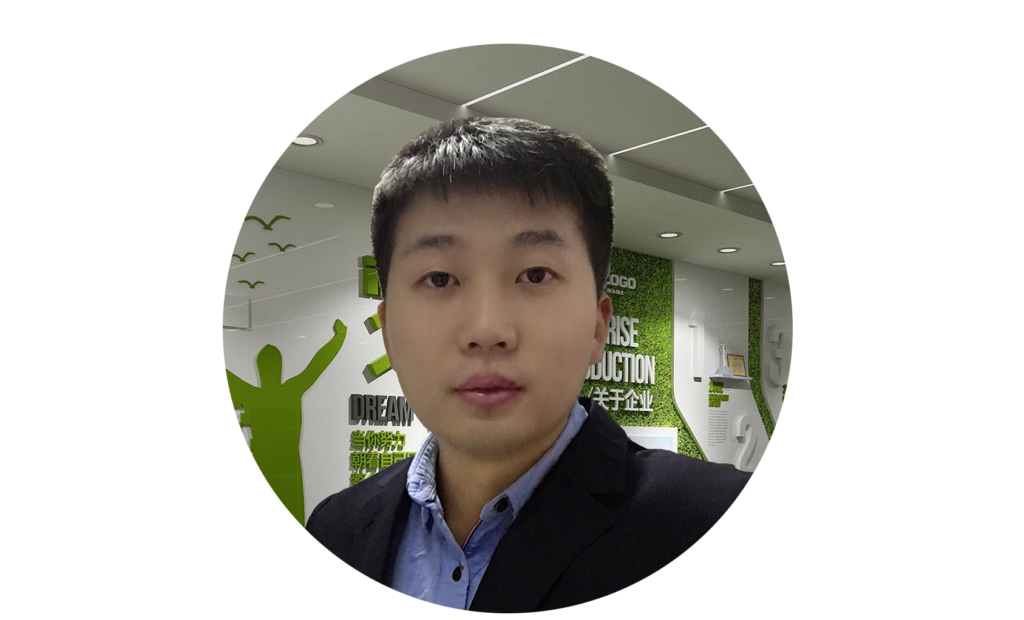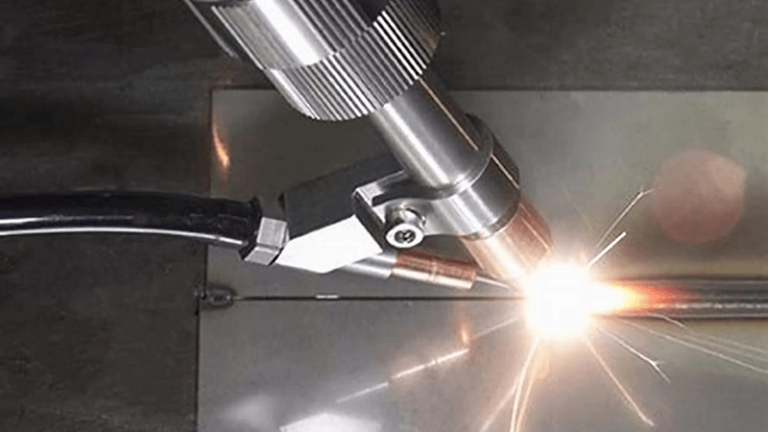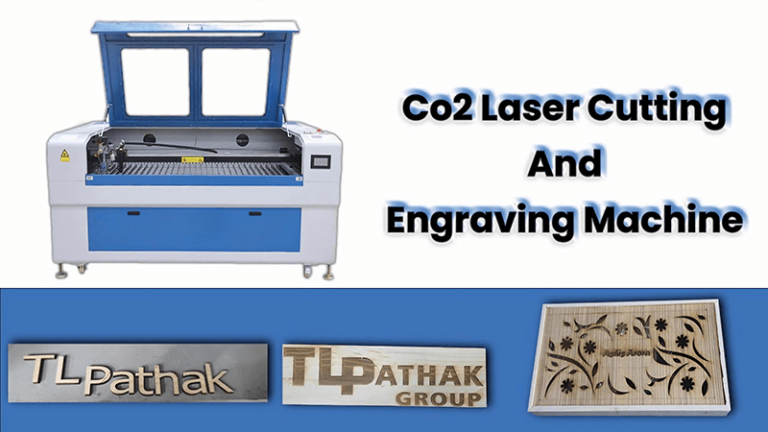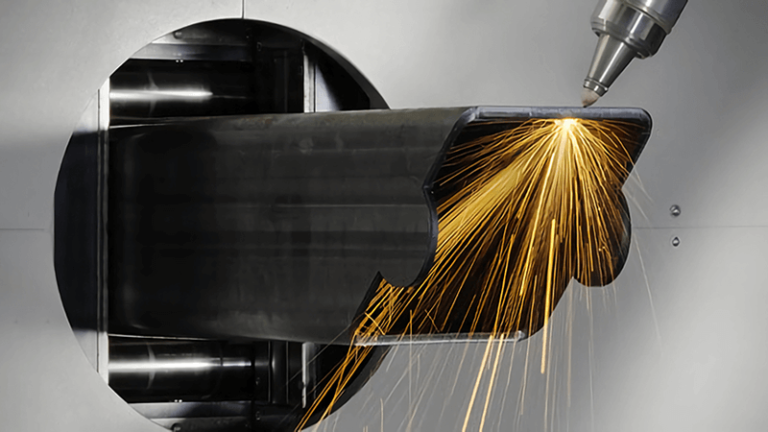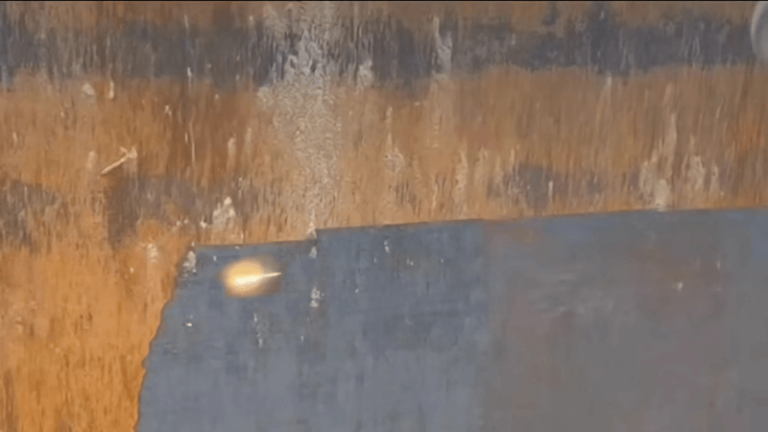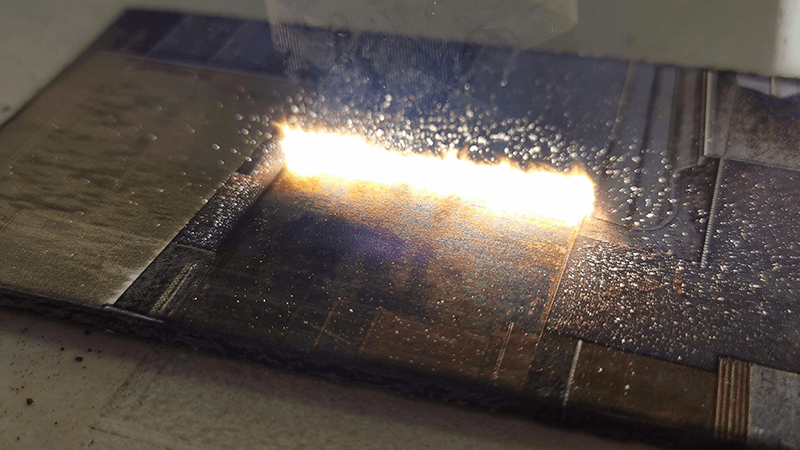
Rust is the arch-nemesis of many industries. From construction to automotive, rust causes significant damage, costing both time and money. As we all know, traditional methods like sandblasting or chemical cleaning are messy and time-consuming. But there's a new hero in town: the laser rust cleaning machine. So, how do you pick the right one for your needs?
The right laser rust cleaning machine can save you hours of labor and money, but with so many options out there, it’s not always easy to know which one is perfect for your operations. In this guide, I'll help you navigate the world of laser rust cleaning machines, so you can choose one that fits your specific requirements.
Maintaining your equipment is essential to keeping things running smoothly. Let’s dive in and understand what makes a good laser rust cleaning machine.
What is a Laser Rust Cleaning Machine?
Before we get into the nitty-gritty, let's clarify what a laser rust cleaning machine actually is. Essentially, it's a tool that uses high-powered laser beams to remove rust, paint, and other contaminants from metal surfaces. The laser vaporizes these unwanted materials without damaging the underlying metal.
Laser cleaning machines are highly efficient, precise, and versatile, making them ideal for industries like manufacturing, automotive, and even heritage restoration. Unlike traditional methods, laser cleaning produces no secondary waste, reducing the cleanup time and cost.
Pulsed laser cleaning machines are ideal for cleaning delicate components in industries like aerospace and medical device manufacturing.True
Pulsed lasers are precise and cause minimal heat impact, making them perfect for delicate materials in industries where precision is critical.
Laser rust cleaning machines produce a significant amount of secondary waste, making cleanup costly and time-consuming.False
Laser cleaning produces no secondary waste, reducing cleanup time and associated costs.
How Laser Rust Cleaning Works
Laser rust cleaning utilizes a technique known as laser ablation, where concentrated laser beams are directed at the rusted surface. The energy from the laser causes the rust to heat up quickly and vaporize. The main elements of this process include:
- Heat Generation: The laser beam generates intense heat, causing the rust to expand and peel off from the metal surface.
- Short Pulse Duration: To protect the underlying metal, the laser emits brief pulses of light, preventing excessive heat buildup and ensuring only the rust is removed.
- Non-Contact Method: Since the cleaning process doesn’t involve direct contact, it prevents any physical wear or damage to the metal, preserving its surface integrity.
The speed of rust removal depends on factors like the thickness of the rust and the laser’s power. For lighter rust, removal can occur at a rate of around 50 cm² per second, while thicker rust may take longer.
Two Kinds of Laser Rust Cleaning Machine
The two primary types of laser cleaning machines are pulsed laser cleaning machines and continuous wave (CW) laser cleaning machines. Each type has distinct characteristics, power ranges, and applications that cater to different cleaning needs.
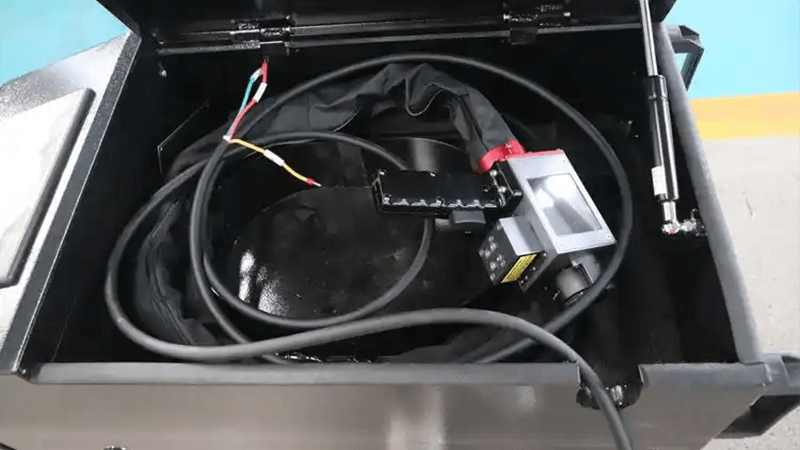
Pulsed Laser Cleaning Machines
Pulsed laser cleaning machines utilize short bursts of high-energy laser light to remove contaminants from surfaces. This method leverages the principle of rapid thermal expansion to detach materials such as rust, paint, and grease without damaging the underlying substrate.
- Power Range
Pulsed laser systems typically operate within the following power ranges:
200W to 1000W: Common for general cleaning tasks.
Up to 2000W: Available for specialized applications requiring more power.
Some advanced models can achieve peak powers exceeding 10 kW, making them suitable for particularly challenging cleaning scenarios. - Key Features
High Peak Power: The ability to deliver intense energy in short pulses allows for effective removal of tough contaminants.
Precision Control: Operators can adjust parameters like pulse duration and frequency, enabling tailored cleaning processes for different materials and contaminant types.
Minimal Heat Impact: The rapid nature of pulsed lasers reduces the heat-affected zone (HAZ), protecting sensitive surfaces from thermal damage. - Applications
Pulsed laser cleaning machines are ideal for:
Delicate Components: Used in aerospace, electronics, and medical device manufacturing where precision is critical.
Rust and Paint Removal: Effective on metal surfaces, making them suitable for maintenance in automotive and industrial applications.
Historical Artifact Restoration: Safely cleans valuable artifacts without damaging them.
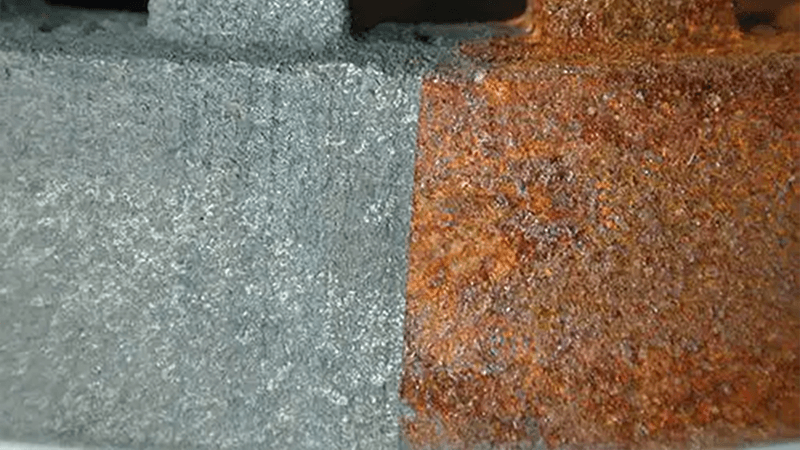
Continuous Wave (CW) Laser Cleaning Machines
Continuous wave laser cleaning machines emit a steady beam of laser light, making them particularly effective for large-scale industrial cleaning tasks. This method is characterized by its efficiency in covering extensive areas quickly.
- Power Range
CW laser systems generally operate within these power levels:
1000W to 3000W: Commonly used in industrial applications.
Some models may exceed 3000W for heavy-duty tasks. - Key Features
Consistent Energy Output: The continuous delivery of energy allows for efficient cleaning over large surfaces without interruption.
High Efficiency: Capable of covering areas at rates of up to 60 m²/hour, making them ideal for extensive industrial applications. - Applications
CW laser cleaning machines are commonly employed in:
Large Steel Structures: Effective for cleaning bridges, buildings, and other infrastructure before maintenance or repainting.
Machinery Maintenance: Removes corrosion, scale, and oil stains from machinery parts in sectors like automotive manufacturing and petrochemical processing.
Shipbuilding and Heavy Industry: Suitable for preparing surfaces before painting or coating processes.
Comparison of Pulsed vs. Continuous Wave Laser Cleaning Machines
| Feature | Pulsed Laser Cleaning Machines | Continuous Wave Laser Cleaning Machines |
|---|---|---|
| Energy Delivery | Short bursts | Constant beam |
| Power Range | 200W to 2000W (up to 10 kW) | 1000W to over 3000W |
| Heat Impact | Minimal | Higher potential heat accumulation |
| Precision Control | High | Moderate |
| Ideal Applications | Sensitive materials | Large-area industrial cleaning |
| Cost | Generally higher | Typically lower |
| Efficiency | Higher for small areas | Higher for large areas |
Key Considerations When Choosing a Laser Rust Cleaning Machine
Now that you know what a laser rust cleaning machine does, let's talk about what factors you should consider when choosing one.
-
Power and Efficiency
Laser power plays a critical role in how fast and effective the cleaning process is. Machines with higher power ratings can clean rust more quickly and from tougher materials. However, don't go overboard – you need a machine that balances power with the material you're working on. Too much power on delicate materials could cause damage, which leads us to the next factor: efficiency. -
Size and Weight
Consider the size and weight of the machine. A larger machine might offer more power, but it could also be less maneuverable and more difficult to store. If you're working in tight spaces or need something portable, a compact, lightweight model might be a better fit. -
Types of Materials It Can Clean
Not all laser rust cleaning machines are suitable for every type of material. Some models work best on certain metals, such as steel or aluminum, while others can handle a broader range of materials. If you're working with a variety of metals, ensure the machine can accommodate them. -
Maintenance and Support Services
A reliable machine is nothing without reliable service. Be sure to check for warranty information and availability of customer support. Some companies offer on-site training and after-sales support, which can make a big difference, especially if you're new to laser cleaning.
Continuous wave (CW) laser cleaning machines are best suited for cleaning large steel structures and machinery parts.True
CW lasers are effective for large-scale industrial applications, such as cleaning steel structures and machinery, due to their consistent energy output and high efficiency.
Pulsed laser cleaning machines typically operate with a power range of 5000W to 10kW, making them ideal for general cleaning tasks.False
Pulsed lasers typically operate between 200W to 2000W, with some advanced models reaching up to 10kW for specialized tasks, not general cleaning.
Common Mistakes to Avoid When Buying a Laser Rust Cleaning Machine
It's easy to get excited about all the shiny new options, but when choosing a laser rust cleaning machine, there are a few common mistakes you should avoid.
-
Overestimating Power Requirements
Just because a machine has higher power doesn’t always mean it’s better for your needs. Choosing a machine with too much power for your application can lead to unnecessary energy consumption and potential damage to the surfaces you’re cleaning. -
Ignoring Long-Term Service Costs
A low price tag might be tempting, but make sure to consider the long-term costs. Some cheaper models might have hidden service fees or parts that are difficult to replace. Always ask about the availability of consumables and spare parts before purchasing. -
Choosing Based on Price Alone
While it's important to stay within budget, choosing a machine based purely on price can lead to bigger expenses down the road. Pay attention to the features and benefits of the machine. Sometimes, spending a little extra upfront can save you a lot in the long term.
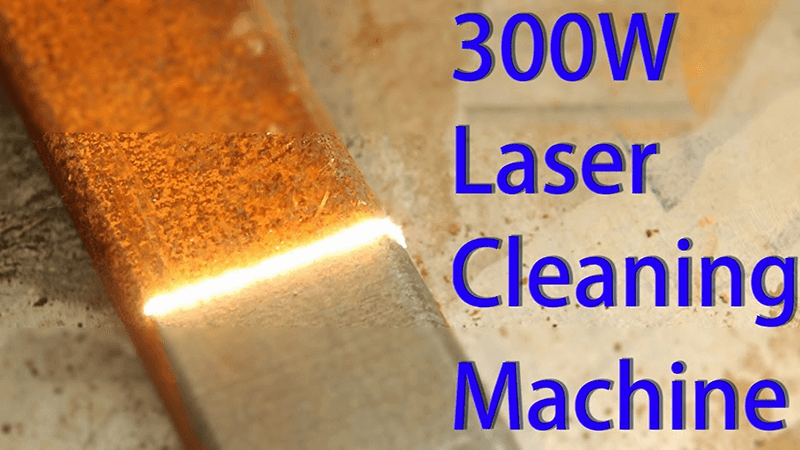
How to Match Your Needs with the Right Laser Rust Cleaning Machine
Choosing the right machine comes down to understanding your specific needs. Here are some questions to help you match the machine to your operations:
- What materials will you be cleaning most often? Steel, aluminum, or something else?
- Do you need portability or is a stationary machine fine?
- How large are the surfaces you plan to clean? - Do you need a larger working area?
- Is energy efficiency important for your operations?
- Will you need extra services like on-site support or training?
By clearly defining your needs, you’ll be able to select the machine that best fits your requirements.
Here is a complete guide for you to choose the right laser rust cleaning machine.
When choosing a laser rust cleaning machine, it’s essential to understand the distinct advantages and applications of pulsed lasers versus continuous wave (CW) lasers. This guide will help you match your cleaning requirements to the most suitable technology, ensuring that you get the best performance for your specific needs.
1. Identify the Material to Be Cleaned
The type of material plays a significant role in determining which laser technology will work best for your application.
-
Metals: Both pulsed and CW lasers can clean metals effectively, but the choice depends on the size and intricacy of the parts being cleaned:
- Pulsed Lasers: Ideal for delicate metals or intricate parts where precision and control are crucial.
- CW Lasers: Best suited for cleaning larger metal surfaces or heavy-duty applications, such as structural steel or industrial equipment.
-
Plastics and Wood: For materials that are more prone to damage, pulsed lasers are often recommended due to their precision.
- Pulsed Lasers: These are gentler on delicate materials, making them ideal for cleaning without causing damage.
-
Glass and Stone: These materials require a careful approach to avoid fractures, and pulsed lasers are typically the better choice.
- Pulsed Lasers: Preferred for cleaning glass and stone without cracking or breaking the surface.
2. Assess the Type of Contaminant
Understanding the nature of the contaminants you're dealing with is essential for choosing the appropriate laser technology.
-
Rust: The level of rust will dictate the best laser type for the job.
- Pulsed Lasers: Perfect for light to moderate rust, especially when precision and control are needed for fine or intricate parts.
- CW Lasers: More efficient for removing heavy rust, offering faster results due to their higher power output and continuous operation.
-
Paint: When dealing with paint removal, the thickness of the layer matters:
-Pulsed Lasers: Ideal for thin coatings or layers of paint, offering a precise removal process without damaging the underlying material.- CW Lasers: Perfect for thicker layers of paint, providing faster and more effective cleaning.
-
Mold and Grease: Both pulsed and CW lasers can handle mold and grease removal, but pulsed lasers provide more control for delicate surfaces.
3. Evaluate the Level of Contamination
The thickness and uniformity of the contaminants on the surface will guide your choice of laser technology.
-
Thin Contaminant Layers:
- Pulsed Lasers: These are preferred for precision tasks where control and minimal thermal impact are essential.
-
Thick Contaminant Layers:
- CW Lasers: For heavy-duty applications, CW lasers are more efficient and provide faster rust or paint removal due to their higher power output and continuous operation.
4. Determine Required Power and Specifications
The power of the laser is a critical factor in ensuring the machine can handle your cleaning needs effectively.
-
Laser Power:
- Pulsed Lasers: Typically range from 200W to 2000W, which makes them ideal for smaller, more detailed tasks that require precision.
- CW Lasers: These generally range from 1000W to over 3000W, providing more power for large-scale industrial cleaning tasks.
-
Pulse Frequency vs. Continuous Output:
- Pulsed Lasers: Offer precision control with minimal heat impact, making them suitable for tasks that require accuracy.
- CW Lasers: Deliver a consistent output, making them better suited for larger areas that need to be cleaned continuously.
5. Consider Machine Configuration
The configuration of the machine affects its usability based on the type of work you need to accomplish.
- Handheld Systems: These are available in both pulsed and CW models. Handheld systems are often more common with pulsed lasers, which provide precise control for smaller or detailed cleaning jobs.
- Fixed Systems: These are typically associated with CW lasers, which provide the stability and efficiency needed for cleaning large surfaces and industrial applications.
6. Evaluate Cost Considerations
Cost is a key factor in the decision-making process. While prices can vary widely depending on power, features, and system configuration, it's essential to factor in both the initial cost and long-term operational expenses.
- Basic Models: Laser cleaning machines typically start at around $6,500 to $8,500. Higher-end models with more power or additional features can cost more.
- Operational Costs: While pulsed lasers tend to have lower operating costs due to their precision and lower power consumption, CW lasers may be more cost-effective for large-scale operations due to their efficiency and faster cleaning capabilities.
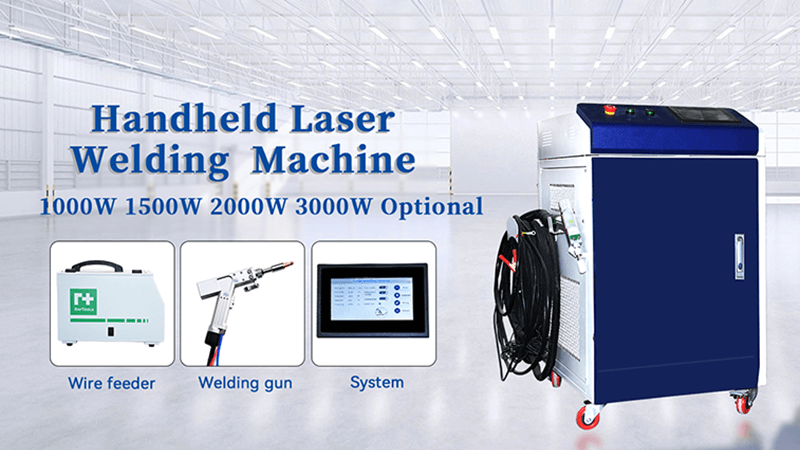
Popular Laser Rust Cleaning Machine Models
Now that we’ve covered the basics, let’s take a look at some popular models on the market.
The Kirin Laser KR-CW200 is one of the top models, known for its high power output and versatility in cleaning a range of metals. It features an efficient cooling system, making it ideal for large-scale operations.
Another excellent option is the KR-PW 100, a more compact model perfect for small workshops. It offers great precision and comes with a variety of customizable settings, making it suitable for both light and heavy-duty rust removal.
Laser rust cleaning machines use short pulse durations to prevent excessive heat buildup and protect the underlying metal.True
The short pulse duration of pulsed lasers ensures that only the rust is removed without damaging the underlying metal, reducing the heat-affected zone (HAZ).
Laser rust cleaning machines can only clean rust and cannot remove other contaminants like paint or grease.False
Laser cleaning machines can effectively remove not just rust, but also paint, grease, and other contaminants from metal surfaces.
How Kirin Laser Can Help You Choose the Best Model
At Kirin Laser, we pride ourselves on providing high-quality, cost-effective laser cleaning solutions. Our team of experts can help you choose the right model based on your specific requirements. Whether you're looking for something high-powered for industrial use or a more compact model for smaller operations, we have you covered.
We offer personalized consultations to understand your needs and recommend the best solution. Plus, our after-sales service ensures that your machine continues to perform at its best for years to come.
Conclusion
Choosing the right laser rust cleaning machine is essential for ensuring your operations are both efficient and cost-effective. By considering key factors such as power, efficiency, and machine size, you can make an informed decision that will save you time, money, and hassle in the long run.
Ready to find your perfect laser rust cleaning solution? Contact us at Kirin Laser and let us help you choose the best machine for your needs!
References:
- "Why Investing in Lasers That Remove Rust Can Save Your Business Time and Money?", from Kirin Laser.
- "How Laser Rust Cleaning Machines Are Revolutionizing Maintenance?", from Kirin Laser.
- "How a Laser Light Rust Remover Can Save You Time and Money?", from Kirin Laser.
- "Laser Cleaning vs. Traditional Methods: Which is Right for Your Business?", from Kirin Laser.
- "Laser cleaning machine for restoration, industry and hobby", from pulso laser.
- "Continuous Wave Laser Cleaning Machines", from Nuwave.

